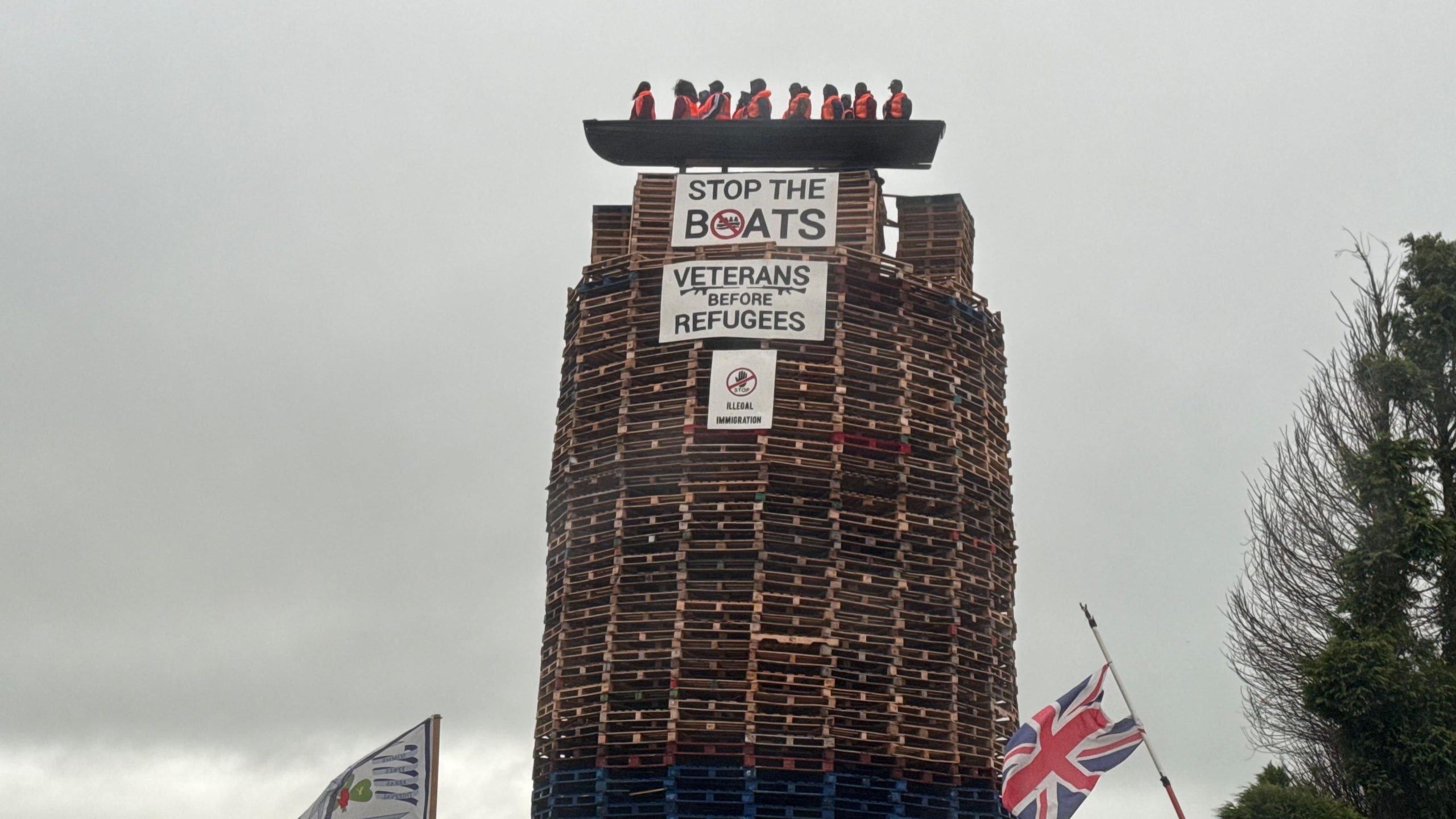A Controversial Bonfire Display Sparks Outrage
A recent bonfire display in County Tyrone has sparked widespread condemnation, with a Sinn Féin assembly member calling the act “deplorable.” The controversial setup features an effigy of refugees in a boat placed atop a bonfire, which is set to be lit as part of the Eleventh Night celebrations. This event, held annually in some unionist areas of Northern Ireland, marks the beginning of the summer parading season.
The bonfire, located in Moygashel, includes a model of a small boat filled with several figures inside. It is positioned on top of a banner that reads “Stop The Boats” and “Veterans Before Refugees.” The display has been criticized for its perceived racist undertones and for promoting far-right ideologies.
Sinn Féin Fermanagh and South Tyrone MLA Colin Gildernew expressed strong disapproval of the display. He described it as “an absolutely disgusting act, fuelled by sickening racist and far-right attitudes.” Gildernew emphasized that such actions are not only offensive but also constitute a clear incitement to hatred. He urged the immediate removal of the display and highlighted that those who come to the island to build a new life should not be seen as enemies.
SDLP councillor Malachy Quinn also voiced his concerns, stating that he had reported the display to the police. Quinn criticized the individuals behind the event, pointing out that they claim to be celebrating British culture. However, he firmly stated that racism and intimidation are not part of cultural heritage. “This isn’t pride, it’s poison,” he said, adding that the display is an affront to every decent person in the community.
The tradition of lighting bonfires on the Eleventh Night is deeply rooted in certain areas of Northern Ireland. These events are typically associated with unionist communities and serve as a prelude to the larger Twelfth of July celebrations. However, the recent display has raised questions about the values being celebrated and the impact such symbols can have on local communities.
Critics argue that the inclusion of anti-refugee messaging in these traditional events sends a harmful message and undermines the principles of inclusivity and respect. The display has prompted calls for a reevaluation of how these celebrations are conducted, ensuring they do not promote division or hatred.
Community leaders and activists have stressed the importance of fostering unity and understanding. They emphasize that while traditions are valuable, they should not be used as a platform for spreading prejudice. The incident has also highlighted the need for greater dialogue between different groups within the community to address underlying tensions and promote mutual respect.
As discussions continue, there is a growing consensus that such displays must be addressed promptly and decisively. The focus should remain on creating an environment where all members of the community feel safe, respected, and valued. The challenge lies in balancing the preservation of cultural traditions with the promotion of inclusive values that reflect the diverse nature of modern society.
In conclusion, the controversy surrounding the bonfire display serves as a reminder of the ongoing need to confront hate and discrimination in all its forms. It underscores the importance of standing together against messages that seek to divide rather than unite. The path forward requires collective effort, open dialogue, and a commitment to building a more inclusive and compassionate community for all.







